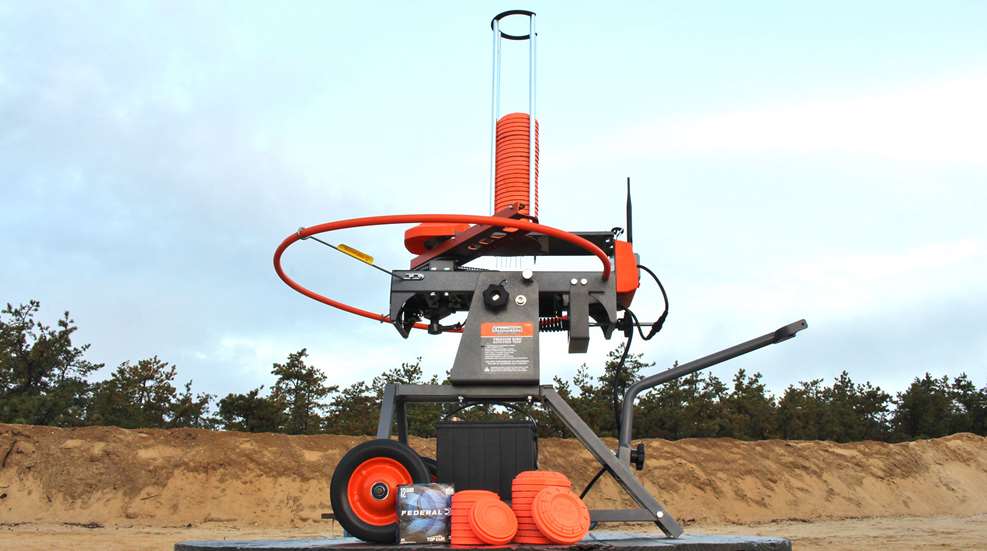
The progression of Champion’s clay-throwing machines (formally known as traps) is extraordinary to follow. What started as spring-activated catapults have progressed into electronic devices that take nearly all of the grunt work out of a relaxing game of clays. Pressing a button is an obvious favorite over cocking a throwing arm, but this comes at the cost of bulk. The first mobility advancement in this product line would come in the form of the WheelyBird, a moderately sized trap connected to a lightweight cart.
Because some enthusiasts found the cart cumbersome to load and unload, they would eventually find reprieve with the Workhorse. This trim-line device is the company’s smallest and least-expensive electronic trap, but with it comes a limited cyclic speed. For 2022, Champion decided it was time to give its customer base the freedom of choice and created an electronic trap that was fast, easy to move and could fire either standard or midi-clay targets. With that, the FreedomBird was born, and we were one of the first in line to test it out.
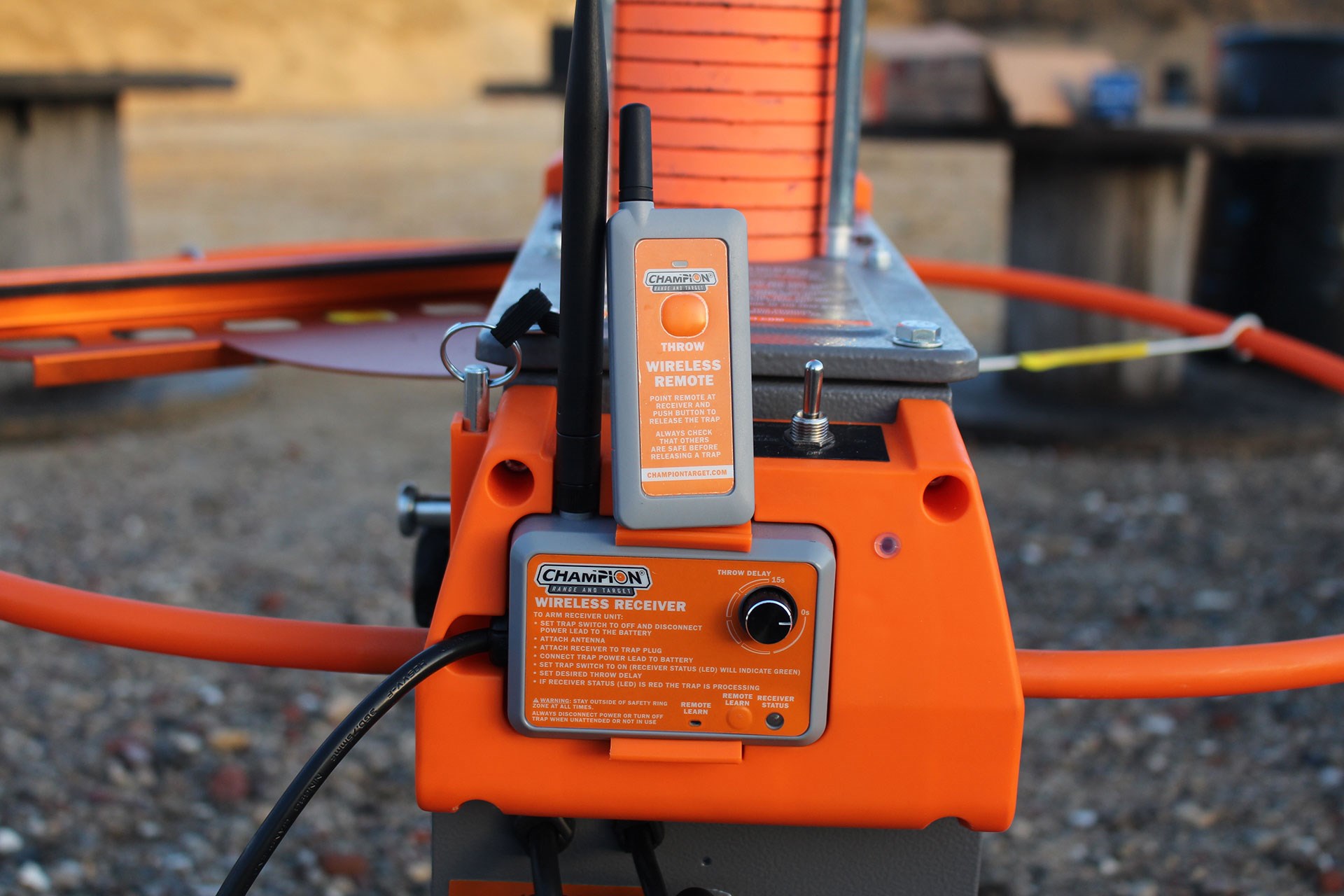
Although larger, the trap showed up on my doorstep packed neatly into a compact box, saving me the cost and aggravation of dealing with a freight company. That being said, a fair bit of assembly was required, but in the long run, it allowed Champion to offer a machine of this caliber for less than $1,000, so I was quickly able to accept the hour-long assembly process. As I unpacked the parts and prepared to get cracking, I noticed that the FreedomBird included both a foot pedal as well as a wireless remote-control system. It was exceptionally considerate that both were in the box, as the remote opens the door to endless angular throwing opportunities, lending the device to sporting clay scenarios. Having a wired foot pedal on hand is also nice, as it provides a failsafe, should your remote-control batteries die. It also provides a simple means of throwing clays for yourself.
As I locked down the final pieces of hardware, I noted that the FreedomBird was built with a molded pocket for the remote receiver. I was excited to see this, as this has been overlooked for years. In the past, I had to put these on with double-sided tape, which, of course, only worked for so long. Additionally, the cart comes with a battery tray allowing for simple movement and adjustment. The WheelyBird and the Workhorse need to have their batteries disconnected if you intend to take them any further than the cord will stretch.
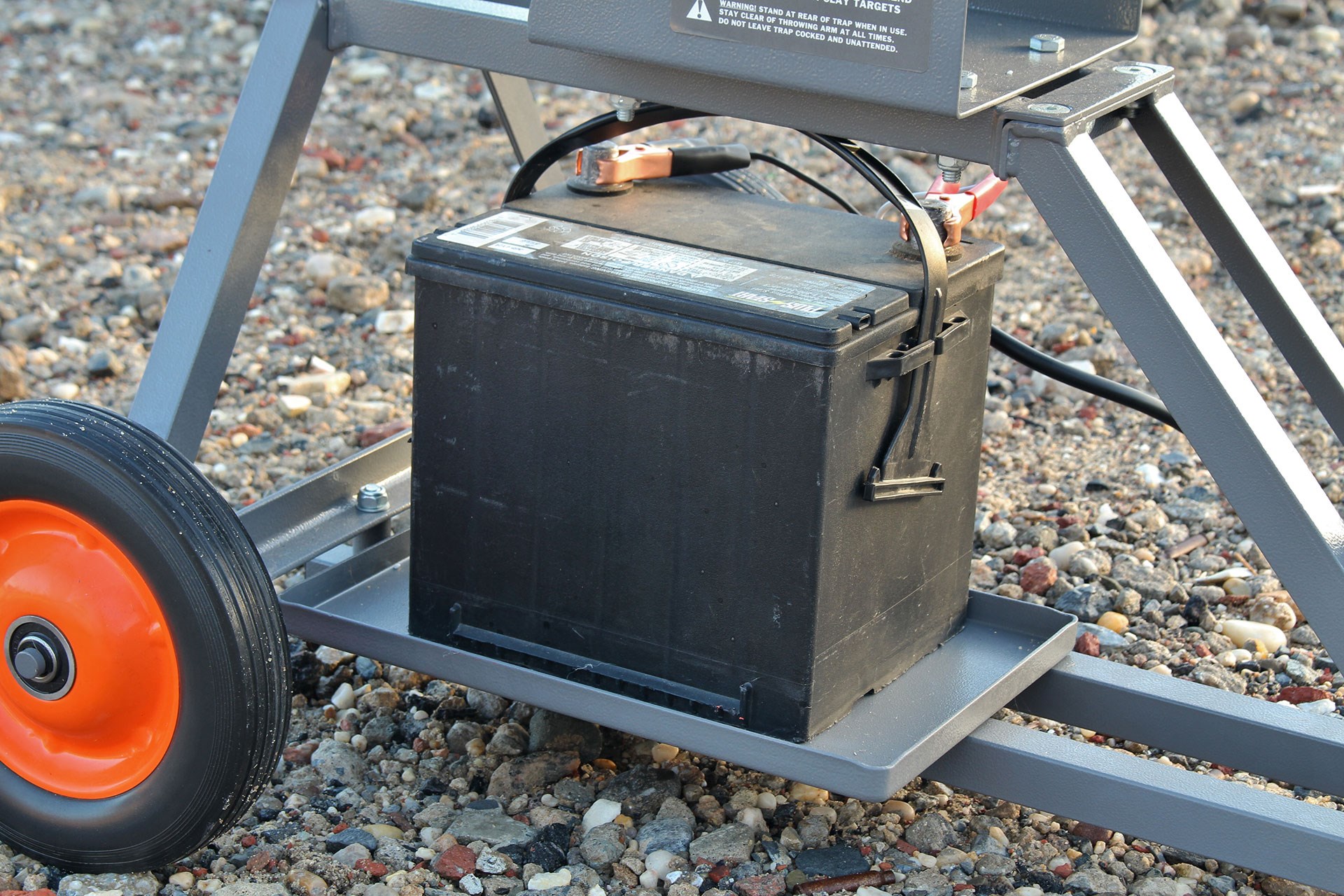
The tray is large enough for most deep-cycle batteries, but I have found that the average consumer can forgo the extra expense of these specialized cells and go with a more economical auto battery. If stored correctly and recharged after every use, the cheapest battery on the market will last for years and years. On average, I have found that most batteries can power the fun for more than eight hours of continuous use, and as long as they are stored somewhere temperature-controlled, they can last for close to a decade.
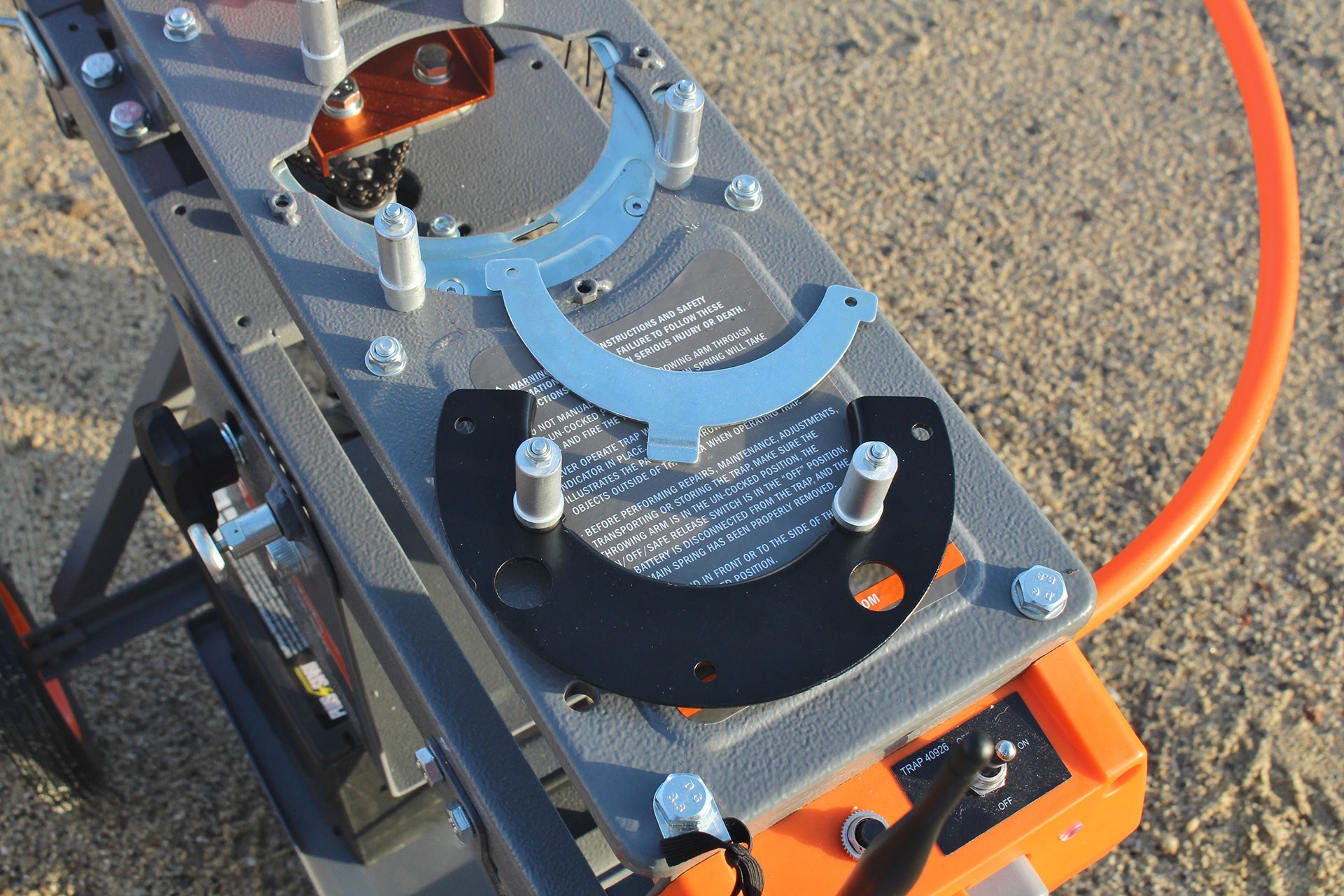
With both standard and midi clays at my disposal, I grabbed my favorite shotgun and headed to the field for testing. Even fully assembled, I was able to get the FreedomBird into the backseat of my compact sedan, which I consider the acid test for any piece of range equipment. The only caveat was that I had to slip the magazine off the top, but I consider that standard, as I would remove this part even if I were to transport it in the bed of a pickup truck. When I arrived, I pulled it out, put the magazine back, connected the battery and was ready to shoot in less than two minutes.
I started by working with the angle of the machine and noticed another improvement over its predecessors. In the past, the machines solely relied on tension to keep them tilted as intended. Over time, the retention knobs would work themselves loose, and you would have to readjust everything. The FreedomBird takes it a step further and adds a locking pin to the existing system, making it more positive than the machines in the class below. After setting it for optimal throwing distance, I cranked the power adjustment knob to the max and slung a few clays in the name of science. After walking to the center of where they landed, I measured an average flight of 67 yards with a rangefinder. That’s not too shabby for a “backyard” trap. After breaking 50 clays, I de-energized the mainspring and converted the FreedomBird to fire the smaller midi clay targets.
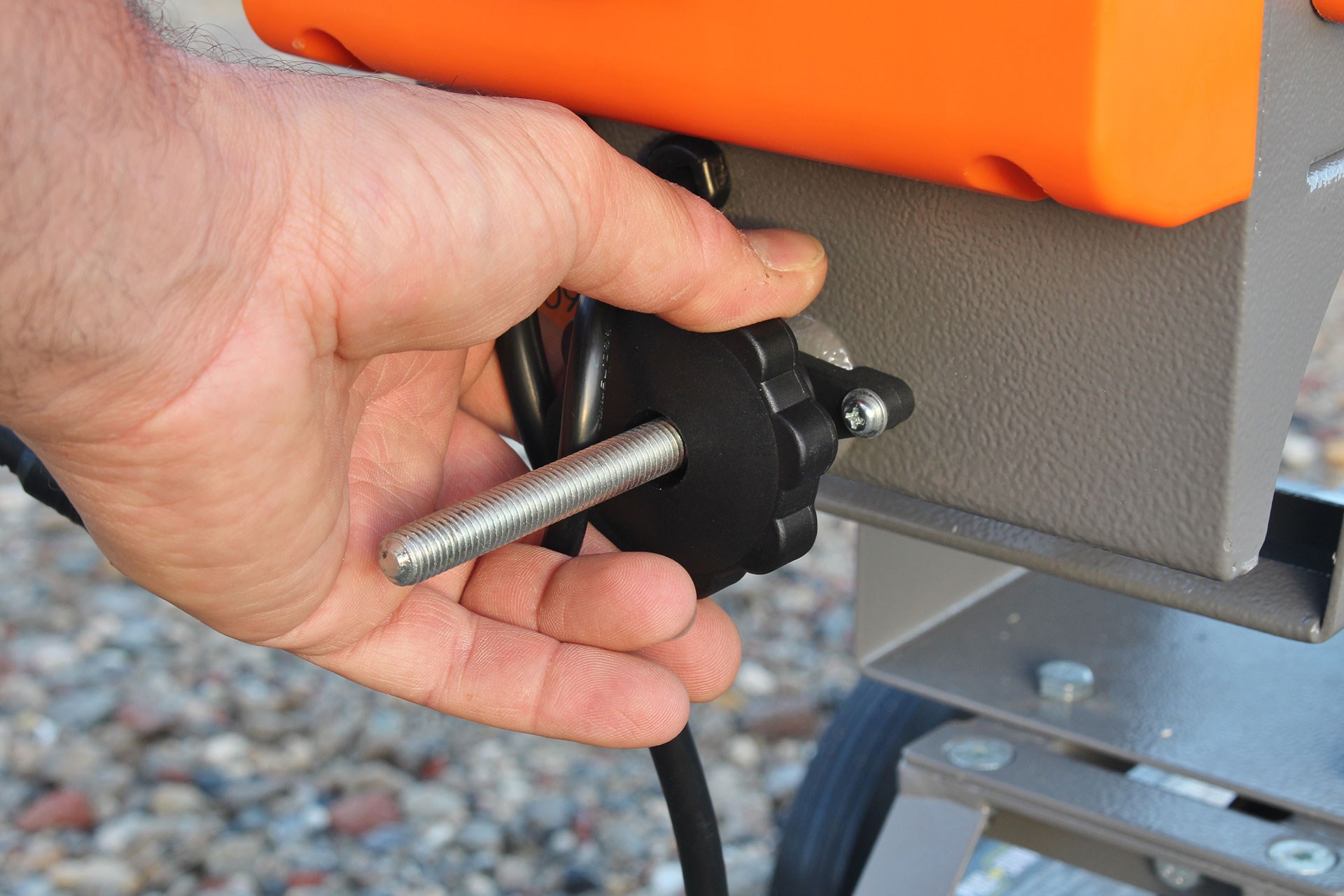
The process was straightforward, but I could have done without having to turn the knob all the way out to get the job done. However, considering that it staves off the possibility of getting injured, it was easier to swallow. My first impression of the midi clays was rather spectacular. These little things whisked across the sky at blazing speeds, making for some incredibly challenging shots. They went an additional 30 yards farther than the standard clays and got there a heck of a lot faster, too. For this portion of the test, I used the foot pedal and just stood on it to get a taste of the flurry mode that gave me about three clays every two seconds. Needless to say, I ran out of ammo pretty quickly.
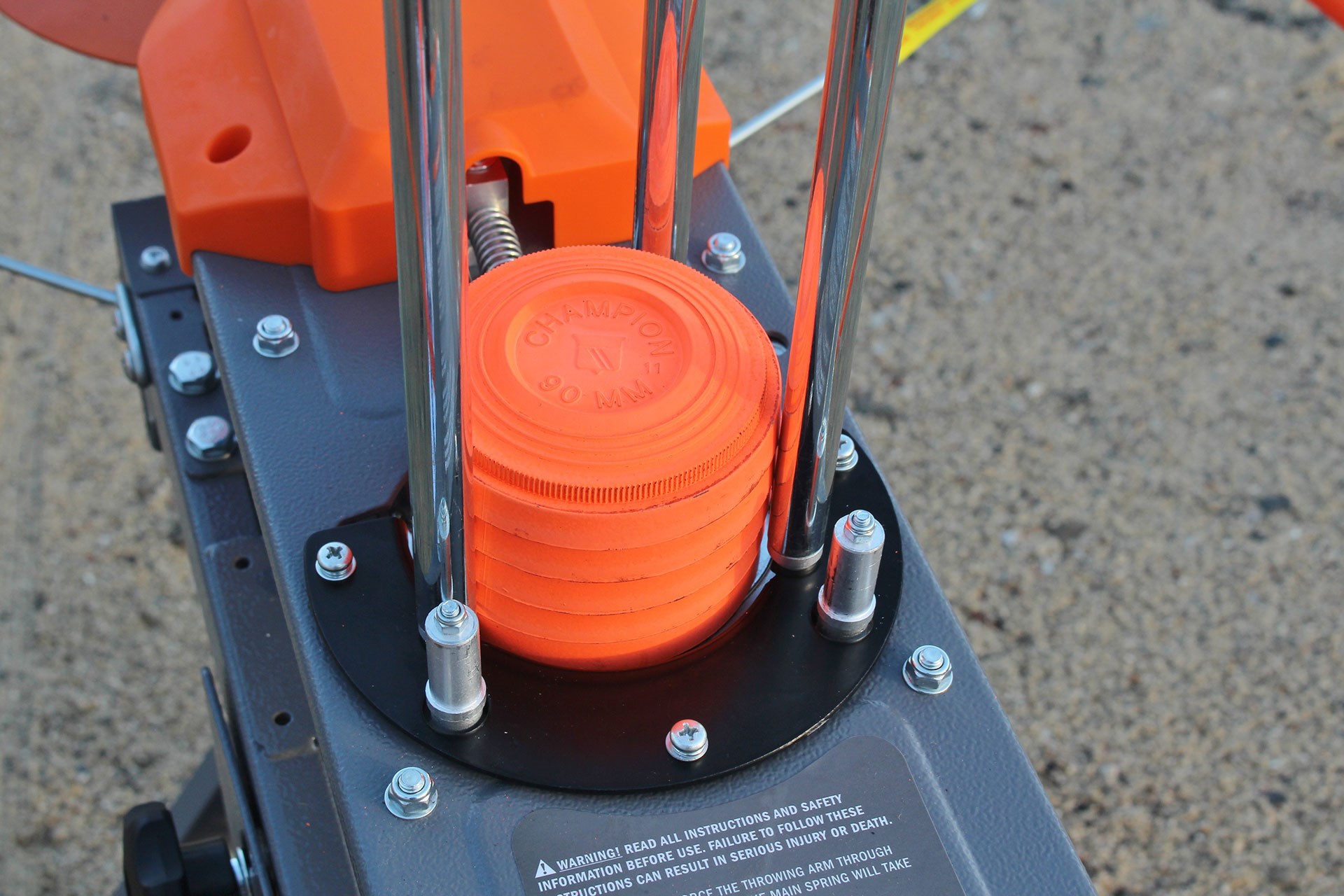
I enjoyed my time with the FreedomBird so much that I am carving out a place for it in the woods behind our home in Pennsylvania. Aligning it with a shooting lane and forcing myself to engage the clays through the trees will provide fantastic practice for a plethora of hunting scenarios and make for a great way to spend an afternoon with friends when they come to visit.
The only feature I would like to see added would be a mainspring adjustment system that provides more leverage than a simple knob. At times, it was tough to crank it to its maximum tension, but truth be told, that isn’t something that is done often enough to notice. Overall, I thought the FreedomBird was a vast improvement on an already-terrific lineup and gave the weekend clay shooter a way to break midi clays without breaking the bank. For more information, visit championtarget.com.




































